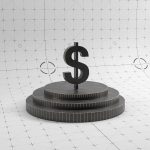Japanese yen fails to build on its overnight strength amid uncertainties about the Bank of Japan’s rate hike.
The Japanese yen (JPY) dipped lower during the Asian session on Friday, appearing to have stalled the previous day’s small recovery against its American counterpart from its lowest level since early August. Investors have started pulling back their expectations for future interest rate hikes by the Bank of Japan (BoJ) in 2024 following Japanese Prime Minister Shigeru Ishiba’scomments, stating that the country is not in a position for further rate increases.
Positive risk tone also weighs on the JPY, albeit muted USD demand helps limit losses.
A combined with a positive risk tone, weakens the safe-haven JPY ahead of Japan’s snap election on October 27 and provides some support for the USDJPY pair.
Meanwhile, the US Dollar (USD) is seen bouncing in a range below the almost two-month high reached on Thursday, providing little impetus to the USD/JPY pair. Investors currently believe that indicators of labor market weakness will allow the Federal Reserve (Fed) to continue decreasing interest rates. However, the hotter-than-expected US consumer inflation statistics reported on Thursday rule out the chance of another big rate decrease in November. This, in turn, discourages traders from placing aggressive USD directional Betting on the US Producer Price Index.
Daily Market Movers: Japanese Yen drifts lower on waning chances for more Bank of Japan rate hikes.
Expectations that the Bank of Japan will not rush to raise borrowing costs have failed to help the Japanese yen capitalize on its slight recovery versus the US dollar from a two-month low reached on Thursday.
Furthermore, political uncertainty ahead of Japan’s snap election on October 27, combined with a generally bullish risk tone, might impair demand for the JPY while continuing to operate as a tailwind for the Japanese yen pair.
The US dollar surged to its highest level since mid-August when the US Labor Department announced that the core Consumer Price Index, which excludes Food and energy prices jumped 3.3% year on year in September.
CPI rose 2.4% in the year to September, versus 2.3% projected.
Meanwhile, the headline CPI rose 2.4% in the year to September, versus 2.3% projected. This, however, was less than the 2.5% in August and the weakest year-on-year increase since February 2021.
Furthermore, the number of Americans seeking unemployment benefits increased 33,000 to a seasonally adjusted 258,000 in the week ending October 5, indicating early signs of deterioration in the US labor market.
Investors now appear persuaded that the Federal Reserve continue to decrease interest rates, putting USD bulls on the defensive ahead of the release of the US Producer Price Index (PPI), which scheduled later this Friday.









